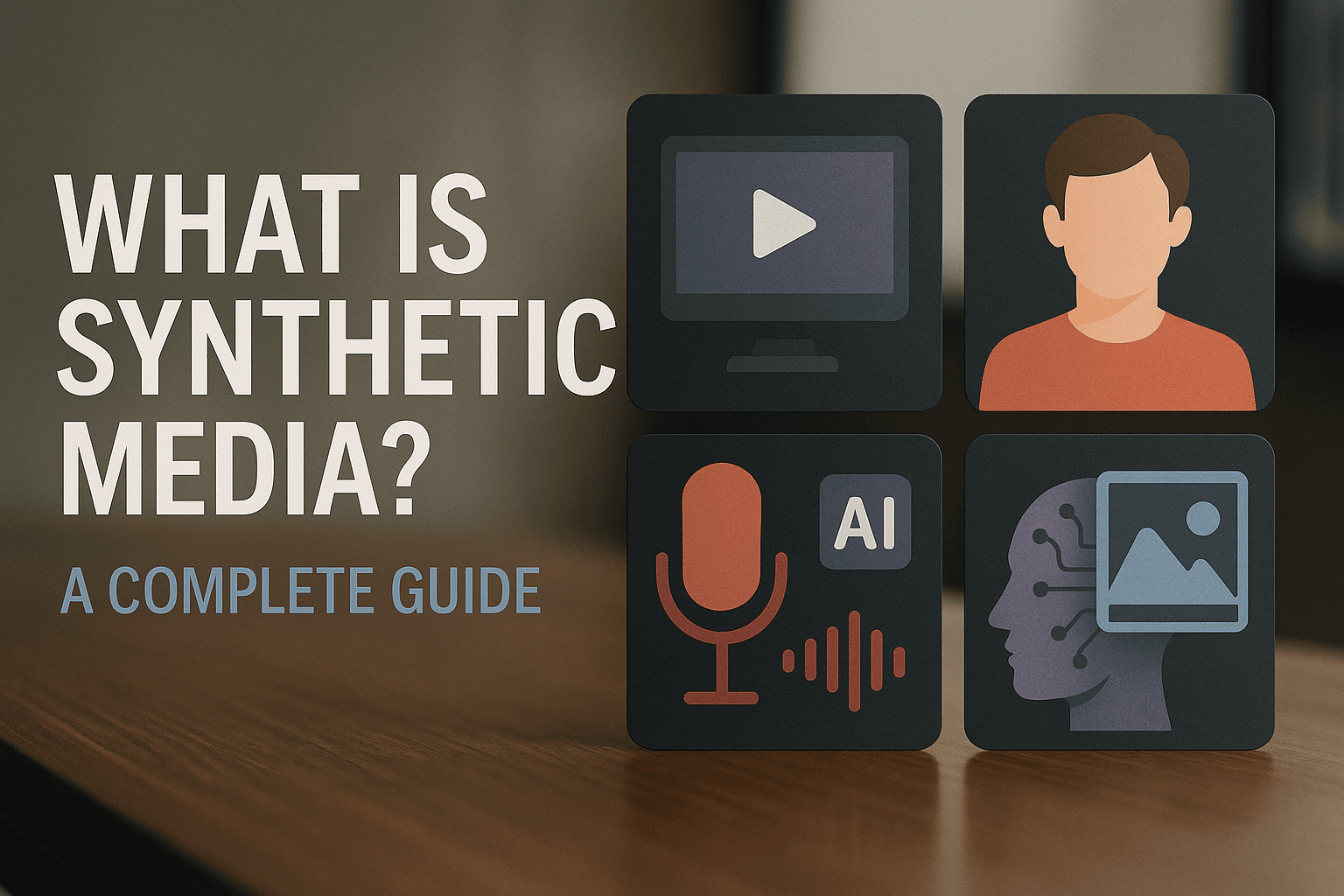Synthetic media is changing the way we create and share content. From AI-generated video, deepfake vocalizations, and digital humans, synthetic media is no longer a science fiction idea – it is real and rapidly changing and growing as a field.
In this blog, we will unpack synthetic media, how it works, what it can be used for, and what you need to know about its horizon. Whether you’re a creator, marketer, or just plain curious, let’s get into this exciting tech together!
What Is Synthetic Media?
Synthetic media is any known media – video, audio, images, or text – that is created or manipulated using artificial intelligence (AI).
Simply put, it is media created fully or partially by machines instead of by human beings.
Examples of synthetic media:
- AI generated voices (voiceover and assistants)
- Deepfake videos (where someone’s face is switched out)
- AI generated articles and scripts
- Virtual influencers, or digital humans
- AI generated art and music
Why Is Synthetic Media So Popular?
The reason why synthetic media is exploding in 2025 is that it saves producers time, money, and effort — and makes the content look cool and professional.
Key benefits:
- Faster content creation
- Lower production costs
- Unlimited availability (these digital avatars never sleep!).
- Designed personalization at scale.
How Is Synthetic Media Used Today?
Some real-time examples of synthetic media from 2025:
1. Voice Cloning
AI-enabled tools, like ElevenLabs and Descript, can clone voices and create podcasts, commercials, and announcements — no microphone needed.
2. Deep Fake Videos
Increasingly adopted in movies, video games, and even commercials to create realistic characters and digitally change the face of an actor in the video.
3. Virtual Presenters
News agencies and companies are using AI avatars to present content live, absent any human presenter.
4. AI Art and Music
Using tools like DALL·E and Soundraw, digital creators can produce artwork or songs with a couple of prompts — ideal for content creators.
5. Personalized Ads
Advertisers’ use of AI means they can provide uniquely personalized video ads to each individual viewer — in their language, style, or tone.
Is Synthetic Media Safe?
Like any technology, synthetic media is neither good nor evil. It’s a powerful technology. Like most powerful technologies, it can certainly be misused, just like the internet and social media can be misused to create fake news or impersonate individuals.
What you need to know:
- You need to make sure that you check if the content you are looking at or interacting with is AI-generated.
- You must be ethical in your use of it — ethical means being truthful and transparent.
- Many synthetic media platforms are now adding watermarks or labels to distinguish AI-made content.
The Future of Synthetic Media (2025–2030)
The future of synthetic media is MASSIVE! We are going to see:
- Digital humans hosting a live show.
- Filmmakers using AI characters in films or series.
- Personalized responsive learning or training videos generated on the fly.
- AI influencers taking over social media channels.
In conclusion, synthetic media is going to influence the future of content creation.
Final Thoughts:
Synthetic media is sensational — it is here to stay! It is fun, powerful, and the possibilities are endless if used correctly. As a brand, a freelancer, or simply someone who loves new technology and is curious about it , having an understanding of synthetic media and how to use it will certainly take you beyond the “typical” in a future reality of digital perception.
So, are you ready to roll up your sleeves, try out some synthetic media tools, and jump in the pool? Get some AI voice makers, video generators, or image makers today, and see what you can make.
Read also – Augmented Reality for Business and Beyond: A Practical Guide


1 thought on “How Synthetic Media work? A Simple Guide”